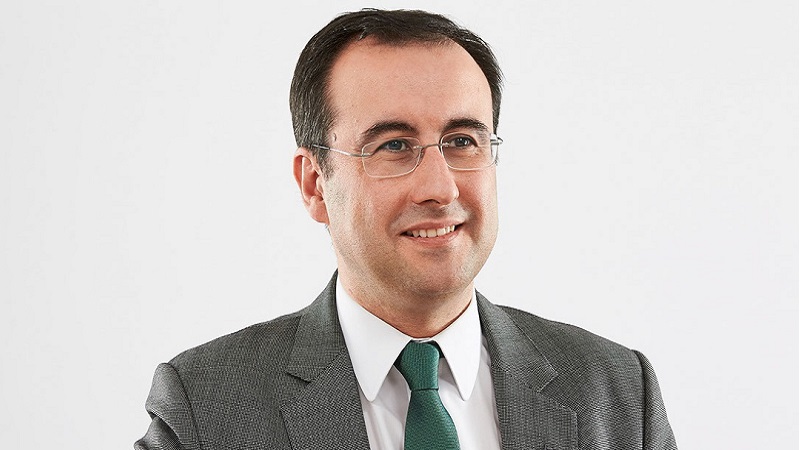Lloyds faces a formidable competitor in Hargreaves Lansdown as it attempts to stem the £10bn its customers plough into D2C investment platforms each year.
The retail banking group is due to complete its £390m acquisition of Embark before the year’s end, seeing the group bring on £35bn of assets under administration run on behalf of 410,000 clients.
In a regulatory filing from July, when Lloyds announced the planned acquisition, the retail banking group said it wants to cater to the broader financial needs of its customers and retain “more of the circa £10bn assets under administration which customers invest with third parties each year”.
See also: Lloyds Bank buys retirement platform Embark for £390m
How Lloyds stacks up compared to Hargreaves Lansdown
Lloyds’ wealth and insurance chief executive Antonio Lorenzo (pictured) this month said he wants to use the Embark acquisition as a springboard to rival Hargreaves Lansdown. “Our ambition is to be north of £100bn in the near term,” he told This is Money. Lloyds can corral assets totalling £60bn, including the AUA from Embark plus some existing business.
Hargreaves Lansdown currently has £138bn in AUA. In the last financial year, for the period ended 30 June, it raked in £8.7bn and landed 233,000 net new clients.
Lloyds is aiming to more than triple its market share in D2C pensions and investments from three to 10 percent, Lorenzo said. That compares to the retail bank’s 26% market share in credit cards, 23% in current accounts and 19% in mortgages.
Hargreaves Lansdown’s UK D2C market share is 42.9%. It has a 43.3% market share of retail stockbroking.
See also: Pandemic investment boom drives Hargreaves Lansdown inflows
Embark’s technology is strong, but so are HL retention rates
The challenge is creating a proposition that would be enticing enough for a Hargreaves customer to make a switch, says Lang Cat consultant Mike Barrett.
“Embark’s a really good platform, with great technology and would be able to support the type of thing Lloyds is looking to do really, really effectively. But in terms of the strategy, that seems to me to be the easy part,” Barrett says.
“Those Lloyds Banking customers who are sending their direct debits to Hargreaves every single month are by definition Hargreaves customers already,” he says.
“If you look at Hargreaves retention rates, they’re consistently above 90%. Hargreaves are really good at acquiring new customers, but once they get hold of customers, they stick with them for the long term.”
Hargreaves’ latest annual report showed its client retention rate sat at 92.1%.
See also: Darius McDermott: Could the ultimate contrarian play finally pay-off?
Distribution power does not necessarily lead to world domination
Boring Money chief executive Holly McKay agrees Lloyds faces difficulties in luring away Hargreaves’ existing customers.
“It is the less confident investor and the underserved who are the potential – and you can’t win them over by copying Hargreaves. You will win them over with content, communication, simplicity and trust.”
Over the last 20 years, McKay has heard a number of companies saying they want to be the next Hargreaves.
“It’s easy to convince yourself that distribution plus product capabilities equals billions of pounds of AUA and world domination,” she says. “But none of this really gets close to the barriers of building a successful consumer-facing investment and pensions business.”
Altus platforms director Ben Hammond suggests Lloyds could tap into its existing clients early in their investing journey, when they are investing their first £10,000 or so. He suggests passive portfolios could be useful for these type of investors and Lorenzo told This is Money that he wants to the bank to get into robo advice.
But Lloyds still faces a challenge because Hargreaves is nabbing customers at a younger age. In its full-year results for 2021, Hargreaves said nearly half the clients joining its platform were in the 30-54 age bracket and the median age of its clients has dropped from 58 years old in 2007 to 46 years old today.
This younger mix of clients underpins the platform’s future growth, said Hargreaves chief executive Chris Hill in the annual results. “We know what they need from our 40-year track record of supporting clients through their financial lives. As we work with these new clients on similar paths, the lifetime value of our overall client base will increase.”
Why banks struggle to take on D2C platforms
History shows banks struggle to integrate investing and online banking, says Jeremy Fawcett, head of Platforum.
“Barclays have been most ambitious by building Barclays Smart Investor onto their online banking platform but there is room for improvement around usability,” Fawcett says. “Getting everything to work together successfully is no trivial task and Lloyds have got their work cut out to reach their ambitions.”
Hammond says although Lloyds has a large captive audience in its millions of customers, the business doesn’t have the focus on Hargreaves. Lloyds had 17.4 million digitally active customers in 2020, according to its latest annual results, over 10 times higher the 1.6 million active clients Hargreaves currently boasts.
Even though both are large companies, Hargreaves is based in one office in Bristol, where D2C investing is its bread and butter, whereas Lloyds is a more complicated disparate business, Hammond says.
Nevertheless, he adds that Lloyds is a trusted brand, “everyone knows its horses galloping across the sand” and there is opportunity for cross-selling.







